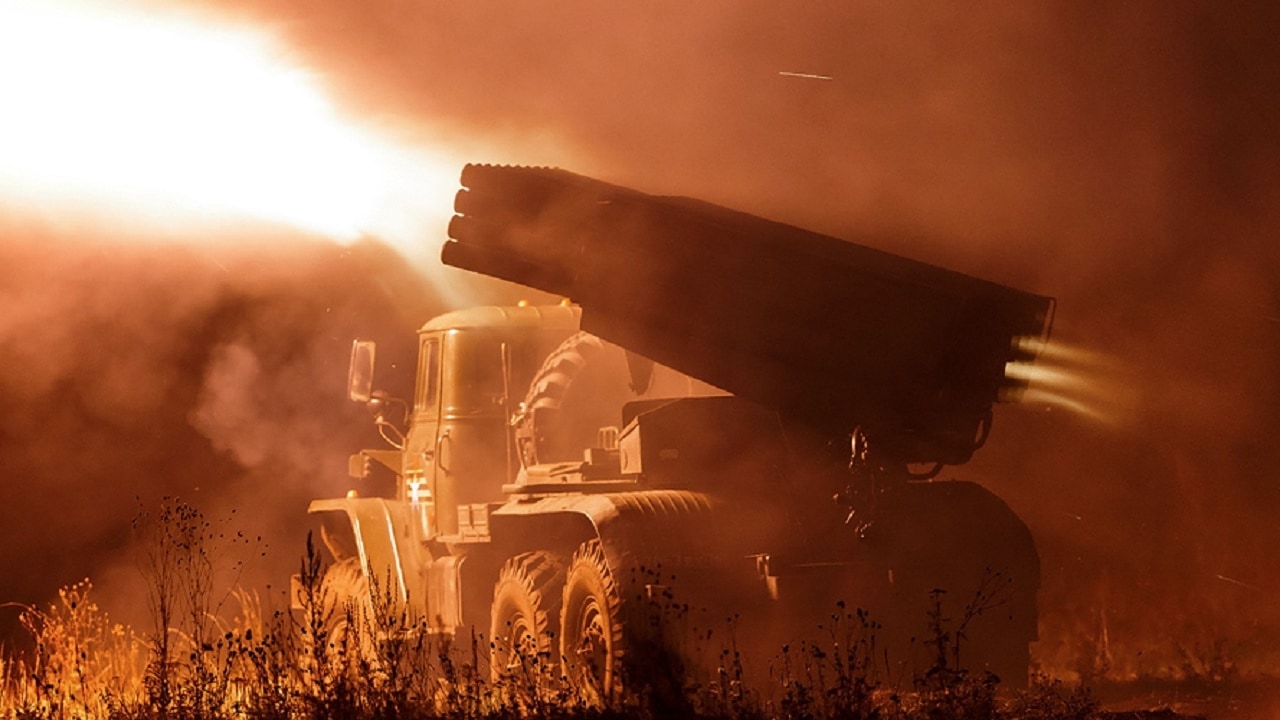The Iranian-Russian partnership has grown to new levels since February 2022. Often labeled a partnership of convenience against the West, the cooperation between the two historic rivals has been highlighted by Tehran’s decision to aid Moscow in the war on Ukraine.
The strategic alliance between the two rogue allies has been notably emblematic by drones.
For more than a year, Iran has supplied Russia with a variety of lethal unmanned aerial vehicles (UAVs) to be used against Ukrainian forces.
Although Tehran initially denied such a transfer, the U.S. has released photographic evidence depicting Iranian-designed drones in the aftermath of barrages.
The Iranian-Russian relationship has blossomed since the Ukraine invasion
Considering the punishing economic sanctions imposed on Russia by the U.S. and its North Atlantic Treaty Organization (NATO) allies, the Kremlin has had to turn to Iran – a country perhaps comparably isolated from the international community- for support.
The White House published images showcasing Russian delegations visiting Iran’s drone airfield last summer.
Since the weapons delivery occurred, Russian forces have been able to use Iranian-designed combat drones like the Shahed to target Ukrainian infrastructure and military assets.
In June, the Biden administration released now-declassified government graphics showing how Iran’s drones are shipped across the Caspian Sea to two air bases in Russia. In fact, a Russian-Iranian collaborative drone factory is expected to prop up outside of Moscow by early next year.
While the transfer of Iranian drones to Russia has been well documented, other weapon transactions between the two allies have slid under the radar.
This week, images depicting the use of Iranian 122mm HE-FRAG Grad rockets by Russian artillerymen surfaced.
According to the open-source group Ukraine Weapons Tracker, Russian troops have been using ammunition produced by Iran for a while now. Iran’s Arash is a series of unguided artillery rockets developed as a copy of the Soviet-designed BM-21 “Grad.”
#Ukraine: The Russian army continues to use ammunition produced by Iran ???????? – Iranian 122mm HE-FRAG Grad rockets of the Arash family are now also being issued to Grad crews on ground.
The images show rockets made in 2018 and 2023. pic.twitter.com/QppmeIvvo0
— ???????? Ukraine Weapons Tracker (@UAWeapons) August 28, 2023
Russian troops are also using Iranian ammo
The older weapon has been in service for more than five decades and can shoot up to 40 unguided rockets from the back of a truck.
Both Kyiv and Moscow employ the Grad.
As detailed by the Wall Street Journal, “The Grad is widely found in Ukraine’s arsenal. The U.S. has sent Ukraine 38 Himars, modern mobile rocket launchers that have had a big impact on the battlefield. But the country started the war with some 260 Grads, according to Janes, the defense-intelligence group, while Russia had around 500 in active service and many more in storage.” Iran’s Arash is a guided version of the Soviet rocket launcher, first tested in 2020.
Iran’s weapon deliveries to Russia is probably not a charitable donation. Many industry experts predict that Tehran could be in line to receive Moscow’s Su-35 fighter jet. Attack helicopters, radars and Yak-130 combat trainer aircraft are also reportedly on the table for Iranian procurement.
The expanding military cooperation between America’s adversaries does not bode well for our own interests. As stated by National Security Council spokesperson John Kirby, “This is a full-scale defense partnership that is harmful to Ukraine, to Iran’s neighbors, and to the international community,” adding that “We are continuing to use all the tools at our disposal to expose and disrupt these activities including by sharing this with the public — and we are prepared to do more.”
Maya Carlin, a Senior Editor for 19FortyFive, is an analyst with the Center for Security Policy and a former Anna Sobol Levy Fellow at IDC Herzliya in Israel. She has by-lines in many publications, including The National Interest, Jerusalem Post, and Times of Israel. You can follow her on Twitter: @MayaCarlin.
From the Vault
The Navy Sent 4 Battleships To Attack North Korea
‘Sir, We Hit a Russian Submarine’: A U.S. Navy Sub Collided with a Nuclear Attack Sub

